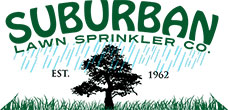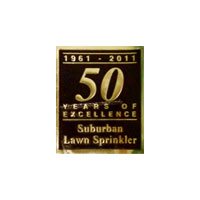
Landscaping fabric is a common sight in garden supply stores, often marketed as the perfect solution for weed control and garden maintenance. At first glance, it seems like a practical fix for a persistent problem. But does it live up to the hype? Many homeowners and gardening enthusiasts find that the drawbacks of landscaping fabric outweigh the advantages. Let’s explore why it might not be the best choice for your yard, and how Suburban Lawn Sprinkler Co. can help with smarter landscaping solutions.
Hinders Soil Health and Development
One of the benefits of mulching your garden is that the organic material decomposes over time, enriching the soil with vital nutrients. Landscaping fabric creates a barrier that prevents this natural process. Over time, your soil may become depleted and starved of nutrients, leading to weaker plants and reduced growth. At Suburban Lawn Sprinkler Co., we encourage sustainable practices like proper mulching and irrigation systems to promote healthy soil.
2. Lack of Flexibility for Garden Design
Once installed, landscaping fabric can lock you into a specific planting layout. Replanting or rearranging your garden becomes messy and time-consuming. For gardeners who enjoy updating their landscape or staggering plantings throughout the season, this lack of flexibility can be frustrating. Our experts at Suburban Lawn Sprinkler Co. can help design and maintain a flexible, dynamic landscape that evolves with your needs.
3. Environmental and Material Concerns
Most landscaping fabrics are made from synthetic materials containing petroleum and harsh chemicals, which can raise concerns when used near edible plants. For an eco-friendly and safer approach, Suburban Lawn Sprinkler Co. offers sustainable landscaping solutions and high-quality irrigation systems that support a healthy environment for your plants.
4. Ineffective Weed Control Over Time
While landscaping fabric promises to keep weeds at bay, many homeowners find weeds still grow over time. As dirt, dust, and debris accumulate on top of the fabric, weeds can take root above the barrier. Once this happens, removing weeds can be difficult and may damage your landscaping fabric and plants. Suburban Lawn Sprinkler Co. provides professional weed management techniques and irrigation services to maintain your garden without the hassle of synthetic barriers.
A Smarter Alternative
Instead of landscaping fabric, consider using layers of newspaper beneath your mulch. Newspaper acts as a biodegradable weed barrier, allowing organic materials to decompose and enrich your soil naturally. This simple, sustainable solution is highly effective and avoids many of the pitfalls of synthetic fabrics.
Partner with Suburban Lawn Sprinkler Co. for Smarter Lawn Solutions
At Suburban Lawn Sprinkler Co., we’re committed to providing sustainable and effective solutions for your landscaping needs. Whether you need help with irrigation system installation, weed control, or lawn care, our team is here to assist. Call us today at 508-872-2727 to discuss how we can help you achieve a healthy, vibrant lawn and garden.








